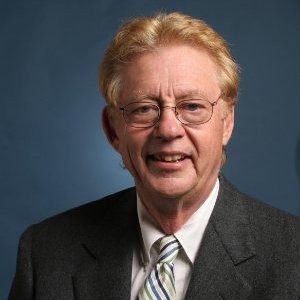
Anthony W. Norman
- Courses6
- Reviews14
- School: University of California Riverside
- Campus:
- Department: Science
- Email address: Join to see
- Phone: Join to see
-
Location:
900 University Ave
Riverside, CA - 92521 - Dates at University of California Riverside: February 2002 - June 2008
- Office Hours: Join to see
Biography
University of California Riverside - Science
22
Anthony
Norman
The beauty of the conformationally flexible ligand vitamin D3 is that it presents an infinite number of three-dimensional shapes. These different shapes then are used to bind the ligand vitamin D binding to two key proteins. First, the vitamin D receptor which is found in the cell nucleus and in the cell membrane caveolae. A second protein is the vitamin D protein. This protein is found only in the extracellular realm and is involved in transporting the D-binding protein though out the circulatory system.
The conformational ligand specificity is different depending whether the ligand is bound to the nucleus/plasma membrane or circulatory system. By Anthony Norman January 6th 2015.
Experience
University of California, Riverside
Distinguished Professor of Biochemistry & Biomedical Sciences, Emeritus
Research interests include all aspects of vitamin D and its daughter steroid hormone, 1,25(OH)2-vitamin D3.
Education
University of Wisconsin, Madison 1959-63; BA Oberlin College 1955
Ph.D.
Biochemistry/ vitamin D
Ph.D training; Ph.D. awarded in 1963Took sabbatical in UC-San Francisco in the Department of Biochemistry at UCSF
I was NOT a student at Took at UCSF in the dept of Biochemistry. I was at UCSF on my faculty position as a sabbatical leave from UC-Riverside.
Publications
1alpha,25(OH)2-Vitamin D3 stimulation of secretion via chloride channel activation in Sertoli cells.
J Steroid Biochem Mol Biol. 2010 Apr;119(3-5):127-34. doi: 10.1016/j.jsbmb.2010.01.011. Epub 2010 Feb 13.
Sertoli cell secretory activities are highly dependent on ion channel functions and critical to spermatogenesis. The steroid hormone 1alpha,25(OH)2-vitamin D3 (1,25(OH)2-D3) stimulates exocytosis in different cell systems by activating a nongenotropic vitamin D receptor (VDR). Here, we described 1,25(OH)2-D3 stimulation of secretion via Cl(-) channel activation in the mouse immature Sertoli cell line TM4. 1,25(OH)2-D3 potentiation of chloride currents was dependent on hormone concentration, and correlated with a significant increase in whole-cell capacitance within 20-40 min. In addition, Cl(-) currents were potentiated by the nongenomic VDR agonist 1alpha,25(OH)2 lumisterol D3 (JN), while 1,25(OH)2-D3 potentiation of channels was suppressed by nongenomic VDR antagonist 1beta,25(OH)2-vitamin D3 (HL). Treatment of TM4 cells with PKC and PKA activators PMA and forskolin respectively, increased Cl(-) currents significantly, while PKC and PKA inhibitors Go6983 and H-89, respectively, abolished 1,25(OH)2-D3 stimulation of Cl(-) currents, suggesting phosphorylation pathways in 1,25(OH))2-D3 mediated channel responses. RT-PCR demonstrated the expression of outwardly rectifying ClC-3 channels in TM4 cells. Taken together, our results demonstrate a PKA/PKC-dependent 1,25(OH)2-D3/VDR nongenotropic pathway leading to Cl(-) channel and exocytosis activation in Sertoli cells. We conclude that 1,25(OH)2-D3 appears to be a modulator of male reproductive functions at least in part by stimulating Sertoli cell secretory functions.
1alpha,25(OH)2-Vitamin D3 stimulation of secretion via chloride channel activation in Sertoli cells.
J Steroid Biochem Mol Biol. 2010 Apr;119(3-5):127-34. doi: 10.1016/j.jsbmb.2010.01.011. Epub 2010 Feb 13.
Sertoli cell secretory activities are highly dependent on ion channel functions and critical to spermatogenesis. The steroid hormone 1alpha,25(OH)2-vitamin D3 (1,25(OH)2-D3) stimulates exocytosis in different cell systems by activating a nongenotropic vitamin D receptor (VDR). Here, we described 1,25(OH)2-D3 stimulation of secretion via Cl(-) channel activation in the mouse immature Sertoli cell line TM4. 1,25(OH)2-D3 potentiation of chloride currents was dependent on hormone concentration, and correlated with a significant increase in whole-cell capacitance within 20-40 min. In addition, Cl(-) currents were potentiated by the nongenomic VDR agonist 1alpha,25(OH)2 lumisterol D3 (JN), while 1,25(OH)2-D3 potentiation of channels was suppressed by nongenomic VDR antagonist 1beta,25(OH)2-vitamin D3 (HL). Treatment of TM4 cells with PKC and PKA activators PMA and forskolin respectively, increased Cl(-) currents significantly, while PKC and PKA inhibitors Go6983 and H-89, respectively, abolished 1,25(OH)2-D3 stimulation of Cl(-) currents, suggesting phosphorylation pathways in 1,25(OH))2-D3 mediated channel responses. RT-PCR demonstrated the expression of outwardly rectifying ClC-3 channels in TM4 cells. Taken together, our results demonstrate a PKA/PKC-dependent 1,25(OH)2-D3/VDR nongenotropic pathway leading to Cl(-) channel and exocytosis activation in Sertoli cells. We conclude that 1,25(OH)2-D3 appears to be a modulator of male reproductive functions at least in part by stimulating Sertoli cell secretory functions.





